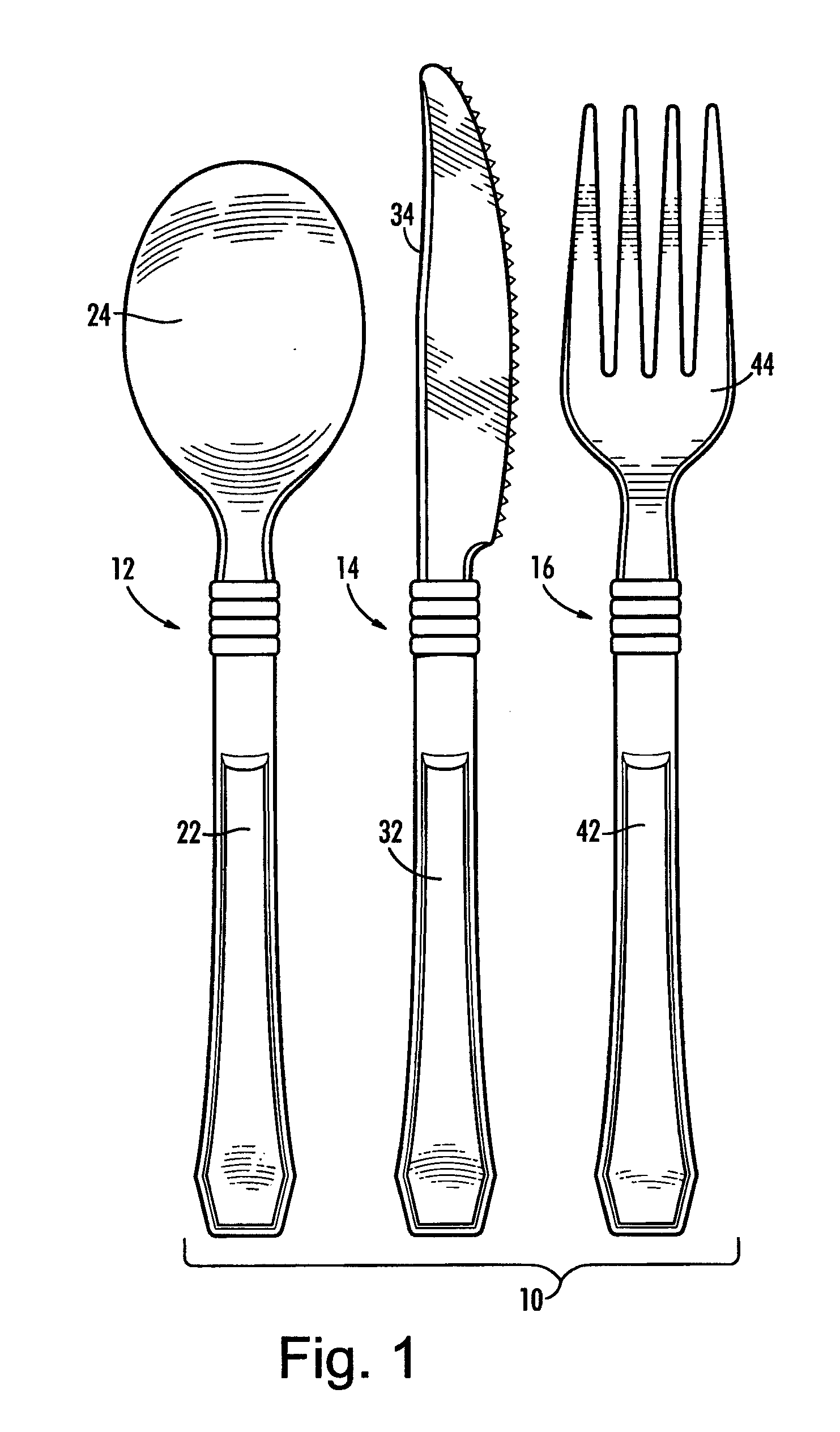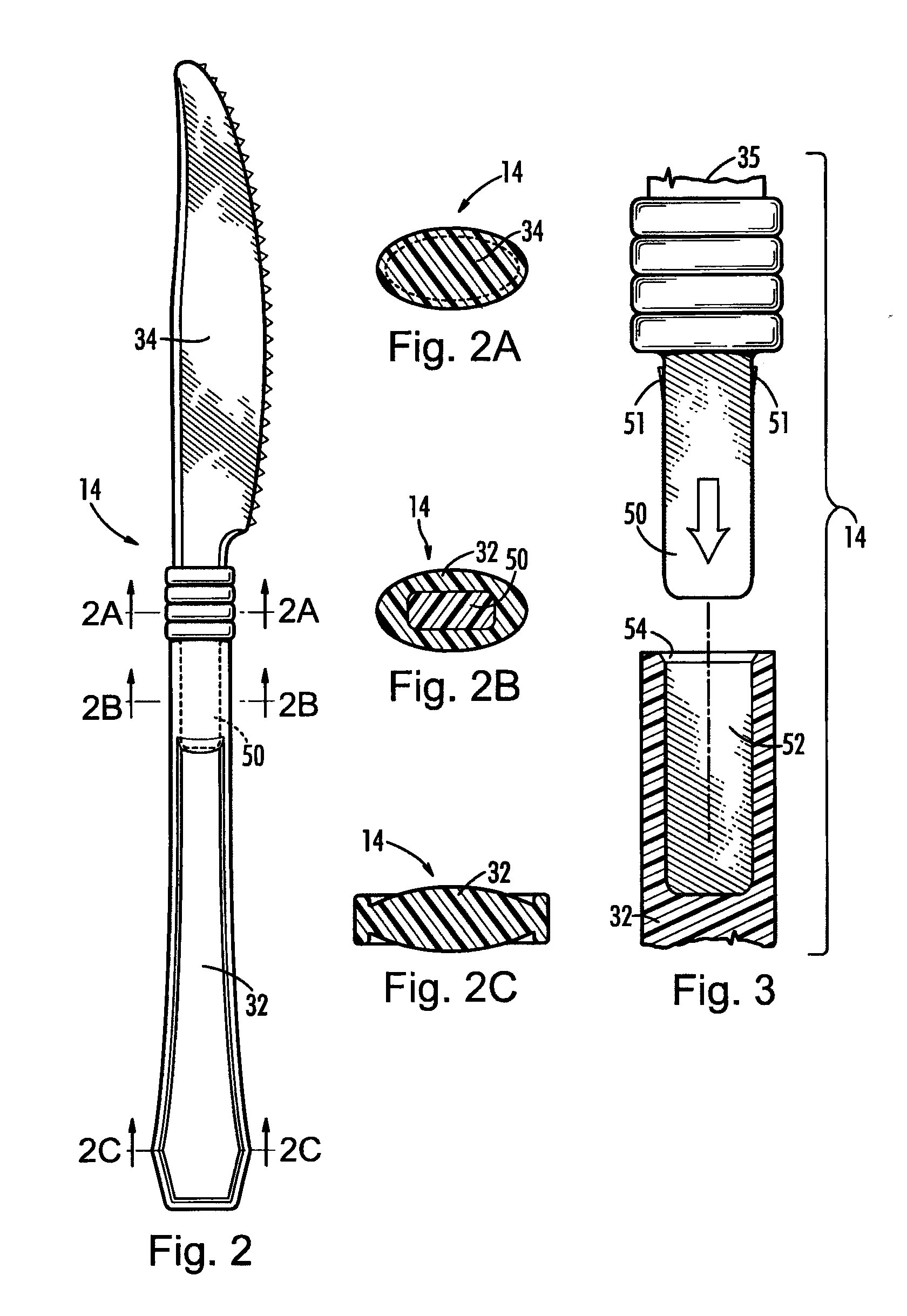Plastic Cutlery and Tableware with Interchangeable Elements
a technology of plastic cutlery and tableware, which is applied in the field of disposable cutlery and tableware, can solve the problems of limiting the number of different designs the perception and image of disposable plastic cutlery rather than its actual performance, and the use of disposable plastic cutlery in upscale situations, so as to reduce the cost of one-piece construction and increase the number of potential choices
- Summary
- Abstract
- Description
- Claims
- Application Information
AI Technical Summary
Benefits of technology
Problems solved by technology
Method used
Image
Examples
Embodiment Construction
[0066]The present invention is plastic cutlery and tableware and a method of making same. The term “cutlery” is used herein to refer to eating utensils such as knives, spoons, forks, salad forks, soup spoons, butter knives, steak knives, cocktail forks, serving forks and spoons, tongs, chop sticks, cake cutters, spatulas, ladles, food picks, kitchen utensils, and the like, all of which are characterized by a handle and a head joined to the handle to form a hand tool or implement. The handle is the part grasped by the user. The term “head” in the present context of cutlery is the part opposite and joined to the handle of the cutlery that is configured to be used in the processes of holding, cutting, manipulating, serving, consuming or conveying food and that comes into contact with food in process and / or into contact with the mouth of the user.
[0067]The term “tableware” refers to items related to food service other than cutlery such as cups, mugs, goblets, wine glasses, tumblers, cha...
PUM
| Property | Measurement | Unit |
|---|---|---|
| shape | aaaaa | aaaaa |
| friction | aaaaa | aaaaa |
| weight | aaaaa | aaaaa |
Abstract
Description
Claims
Application Information
 Login to View More
Login to View More - R&D
- Intellectual Property
- Life Sciences
- Materials
- Tech Scout
- Unparalleled Data Quality
- Higher Quality Content
- 60% Fewer Hallucinations
Browse by: Latest US Patents, China's latest patents, Technical Efficacy Thesaurus, Application Domain, Technology Topic, Popular Technical Reports.
© 2025 PatSnap. All rights reserved.Legal|Privacy policy|Modern Slavery Act Transparency Statement|Sitemap|About US| Contact US: help@patsnap.com



